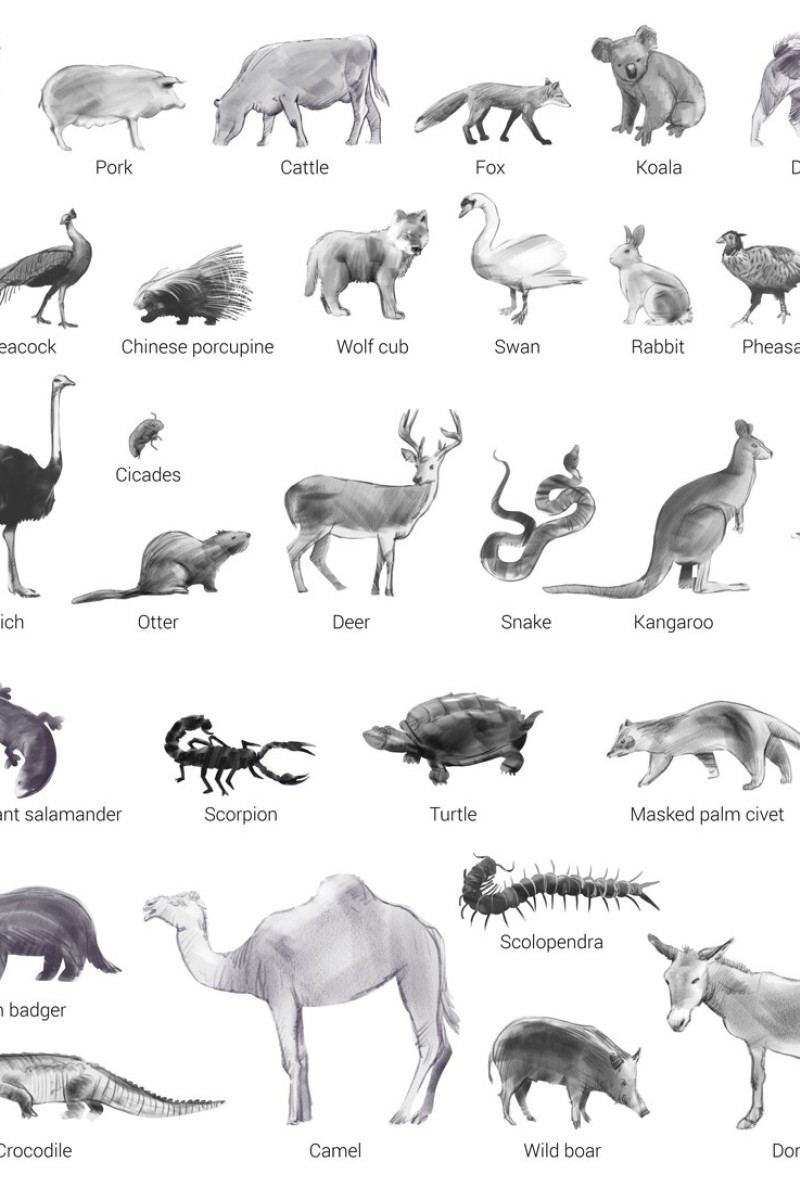 The choice of animals on sale at the market was huge
The choice of animals on sale at the market was hugeThe China coronavirus which has now infected more than 500 people and killed 25 originated from a wet market in Wuhan. The market was a smorgasbord of exotic wildlife, ranging from wolf pups to species linked to previous pandemics such as civets.
Wuhan’s Huanan Seafood Market came under greater scrutiny this week as Chinese officials said the virus may have come from a wild animal sold there.
Past deadly epidemics have been blamed on wild animals – Severe Acute Respiratory Syndrome (Sars) was linked to Chinese consumption of civet meat – setting up Chinese authorities for potential embarrassment if it turns out that lax supervision of wildlife trafficking is to blame for the latest outbreak.
An online price list for a business at the Wuhan market lists a menagerie of animals or animal-based products including live foxes, crocodiles, wolf puppies, giant salamanders, snakes, rats, peacocks, porcupines, camel meat and other game – 112 items in all.
“Freshly slaughtered, frozen and delivered to your door,” said the price list for the vendor, “Wild Game Animal Husbandry for the Masses”.
Gao Fu, director of the Chinese centre for disease control and prevention, said in Beijing on Wednesday that authorities believe the virus likely came from “wild animals at the seafood market”, though the exact source remains undetermined.
China bans the trafficking of a number of wild species or requires special licences, but regulations are loose for some species if they are commercially farmed.
The Beijing News quoted merchants as saying trade in wildlife took place up until the market was shuttered for disinfection shortly after the outbreak.
A number of the early sufferers of the virus, now known as the 2019 Novel Coronavirus (2019-nCoV), were employees of the market.
Many exotic species are still widely consumed in China and other Asian countries where they are considered a delicacy – like the civet or some rats or bats – or for purported health benefits that are unproven by science.
But this brings growing human health risks, said Christian Walzer, executive director of the US-based Wildlife Conservation Society’s Health Programme.
Walzer said 70 per cent of all new infectious diseases come from wildlife, with habitat encroachment increasing the chances of pathogens spreading.
“Wildlife markets offer a unique opportunity for viruses to spill over from wildlife hosts,” he said.
“It is essential to invest resources not only into discovering new viruses, but more importantly, in determining [what drives the] spillover, amplification, and spread of infectious diseases.”
Bats are thought to have spawned Sars, which in 2002-03 killed hundreds of people in Asia, mostly China, including nearly 300 in Hong Kong.
A timeline of the virus’ development
Sars was also found in civets in wildlife markets in China, with many scientists believing the bat virus infected the cat-like creatures and then humans who ate them.
Following Sars, China cracked down on consumption of civets and some other species, but conservationists say the trade continues.
China has so far won praise for its openness and handling of the current outbreak in stark contrast to Sars, when it was accused of stifling information and failing to cooperate with the rest of the world.
